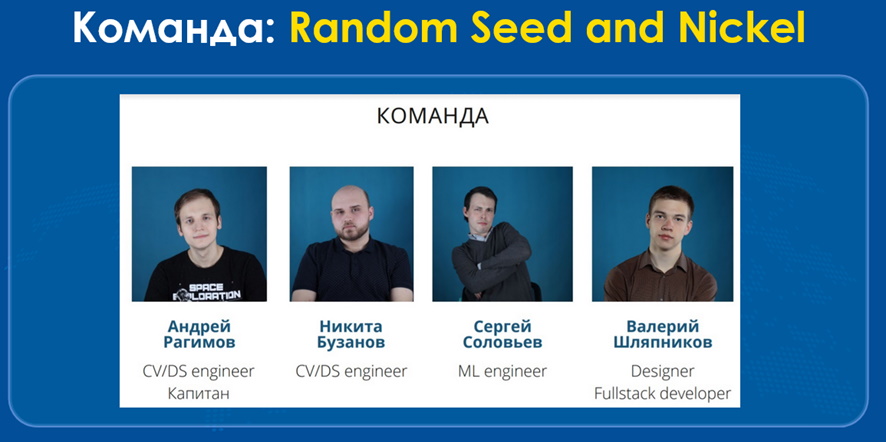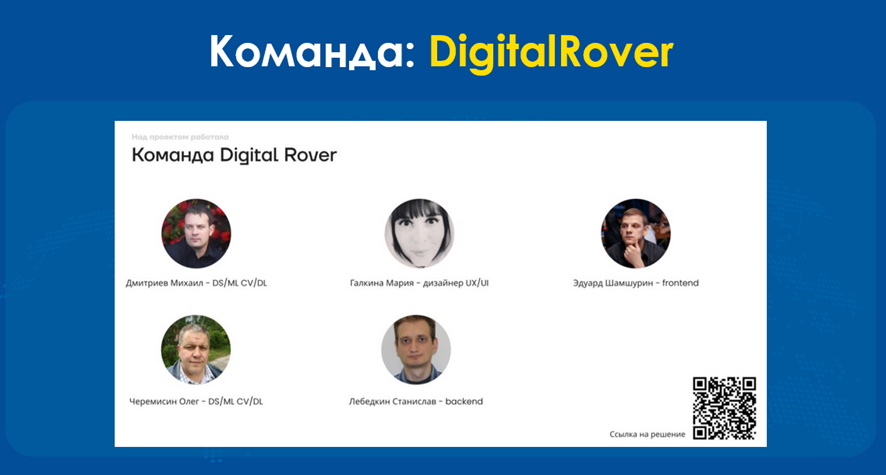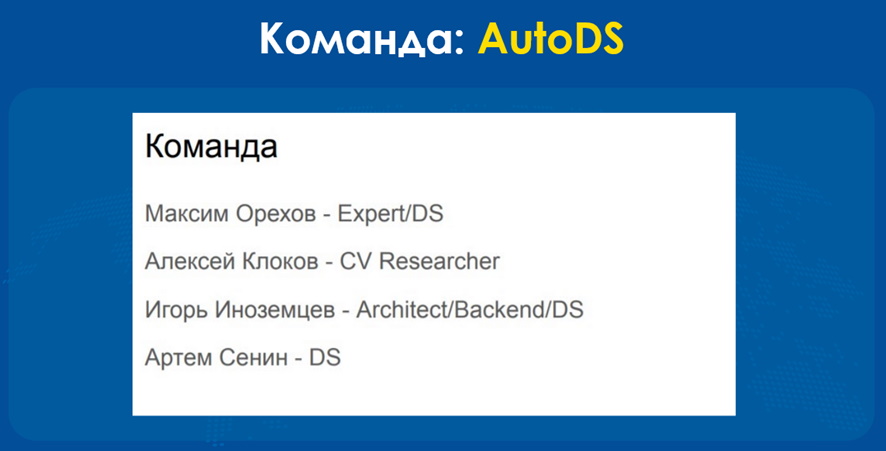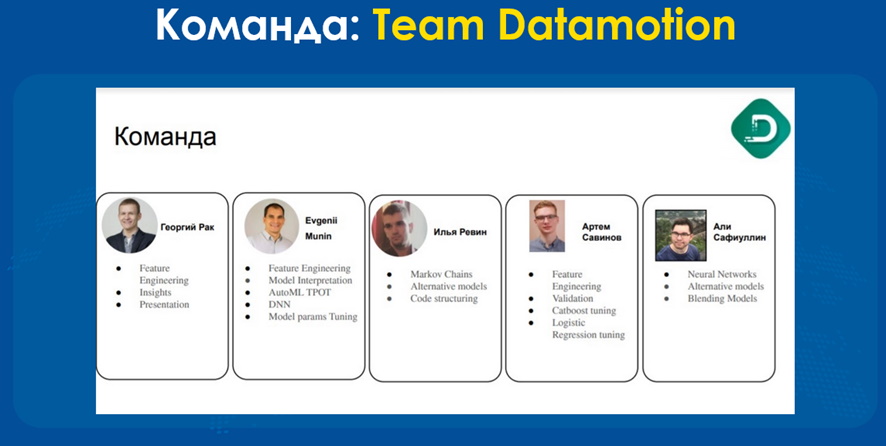
Hello again! More recently , an article about big data of the metallurgical industry and other technologies was published on Habré . In addition, the same article told about the hackathon with Norilsk Nickel, which, as planned, took place from 16 to 18 April. The results are already known, so it's time to evaluate them. All the most interesting, as usual, is under the cut.
What is this hackathon?
It was a 36-hour online hackathon for:
- developers
- Scientist date
- analysts
- managers
It consisted of two main tracks:
Foam Party - determination of the flow rate of foam with metal and other flotation parameters from the video to optimize the operator's work in production.
Sick lists - creating a model for predicting sick leave of employees in one of the production workshops of Norilsk Nickel using anonymized data about employees and their environment.
The total prize fund of the hackathon was 500,000 rubles: 250,000 rubles for each track. Plus, each participant gets a merch. Moreover, for the People's Choice Award, participants receive AirPods Pro, and promo codes Yandex.Plus, Okko, Gmoji are also available.
SberCloud acted as a technological partner in computing power, providing the participants with the resources of the ML Space cloud platform and the Christophari supercomputer.
Some important numbers
1027 people applied to participate in the hackathon - this is an excellent result.
The applications of 25 teams, 98 participants in total, passed a careful selection. Looking ahead, let's say that 23 passed their solutions upon completion, that is, they coped with the main task. Well, the winners were determined by the jury.
By the way, the geography of the participants was quite extensive - applications were received from Moscow, St. Petersburg, Novosibirsk, Sverdlovsk, Kaliningrad regions, the Republic of Tatarstan, Krasnodar and Krasnoyarsk regions. We counted 65 regions in total!
And now - to the winners
For convenience, we will indicate the winners for each of the two sections.
Winners of the "Foam Party"
Team "Random Seed and Nickel" , which took first place. Its participants are Andrey Ragimov, Valery Shlyapnikov, Sergey Soloviev, Nikita Buzanov.

During the project, the team implemented a number of algorithms and approaches, including both State Of The Art Optical Flow prediction algorithms and more traditional classical metrics. To find the bubbles, the participants trained the PointRend algorithm from a good checkpoint and got very good results. The combined solution from Deep Learning and Classic CV algorithms shows excellent results, providing a good combination of quality and speed.
Team comment: “We just wanted to solve the problem as well as other teams. Pack the solution and surprise the judges. We believe that we have succeeded. "
The team also looks forward to continuing cooperation, with the implementation of both the idea proposed at the hackathon and additional ideas.
Well, the prize is 120,000 rubles. Not bad!
The DigitalRover team , it came in second. Its participants are
Eduard Shamshurin, Maria Galkina, Mikhail Dmitriev, Stanislav Lebedkin, Oleg Cheremisin.

The project of this team is an interactive analytical dashboard for the control and management of the flotation machine. The analytics is based on both the principles of classical computer vision and modern high-speed neural architectures (YOLOv4) and our own research of autoencoders. A standout feature is the decentralized architecture on the Nvidia Jetson NANO.
Team comment: “We wanted to work on solving an interesting real problem for such a giant as Norilsk Nickel. And, of course, get a prize. The goals have been achieved, everything is fine. "
Digital Rover participants also plan to continue cooperation with Norilsk Nickel to implement their solution.
The amount of the prize received by the team is 80,000 rubles. Third place
AutoDS team . Participants -
Maxim Orekhov, Alexey Klokov, Artyom Senin, Igor Inozemtsev.

To determine the flow rate of foam with metal and other flotation parameters from the video, the team developed:
- Variational autoencoder for anomaly detection.
- Classic CV algorithms for defining foam characteristics.
The project was presented in the form of a demo visualization with an architecture close to the final version. You can evaluate the project here (this is the demo visualization repository).
Prize - 50,000 rubles.
Winners of the "Sick leave certificates"
Teams "Canape" and Team Datamotion took the first place. The jury simply could not give preference to one of them, both projects turned out to be too interesting.

The composition of the "Canape" team - Maxim Shevchenko, Andrey Zakharov,
Nikolay Popov. By the way, this team also received the People's Choice Award with a prize - AirPods Pro for the whole team.
The essence of the project is a basic solution for the proposed problem, with which we managed to take first place on the public leaderboard. In addition to solving the main problem, the participants proposed other problems that can be solved on the basis of this data set.

The Team Datamotion team consists of Georgy Rak, Evgenii Munin, Ilya Revin, Artem Savinov, Ali Safiullin.
The essence of the project is 12 models with different forecasting horizons (Catboost + LSTM + LogReg). Generated features: morbidity in departments, features of work schedule / work hours, features of relatives and other features. Information for 2015 - 8/2019 was used as the initial data: seasonal morbidity in the region, weather data, data on the harmfulness of production. Final solution: Blending of the best models (Catboost + LSTM + LogReg).
Prize - 75,000 rubles for each team.
The Say A team took second place.
Team members: Svetlana Sushchinskaya, Olga Filippova, Elena Tverdokhlebova.

The essence of the project is Lightgbm with temporary features, situation, relatives and other possibilities. The team set up a probability limit for a single year. Validation was carried out for the last year.
Prize - 50,000 rubles.
Well, the PyPyPy team took third place.
Team composition: Nikita Fomichev, Alexander Abramov.

The essence of her project is a model for predicting morbidity based on data on the prehistory of diseases. Participants made a small graph of interaction between shifts and departments through an employee, plus they used SHAP to interpret the effect of features on morbidity.
Prize - 50,000 rubles.
Congratulations to the winners!
Summing up, it is worth recalling the expectations of the organizers of the hackathon: “I would like, as always, satisfied participants. All other things being equal, hackathon participants are the most expensive resource. If you make the participants satisfied with the help of interesting applied problems, and also add promotional codes for food, prizes, gifts to this, then they themselves will create the basis for research, new pull requests, launch new startups or get a job at Norilsk Nickel. "
Well, the participants, the jury, the organizers - everyone was satisfied with the results. I would like to hope that some of the proposed ideas will be implemented already in production.